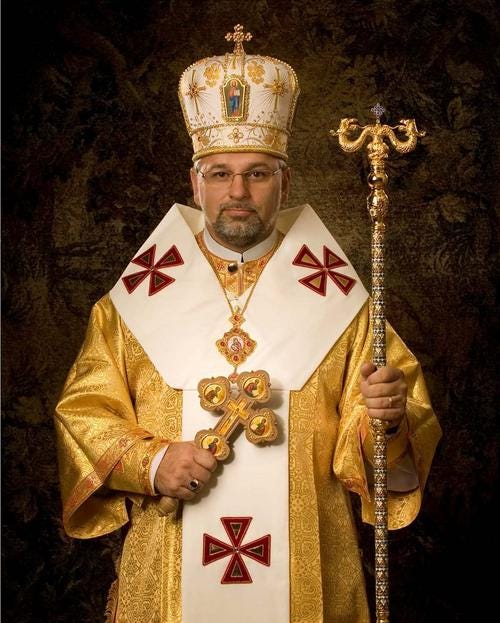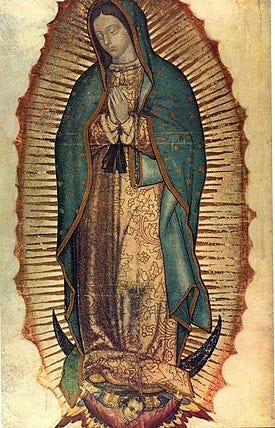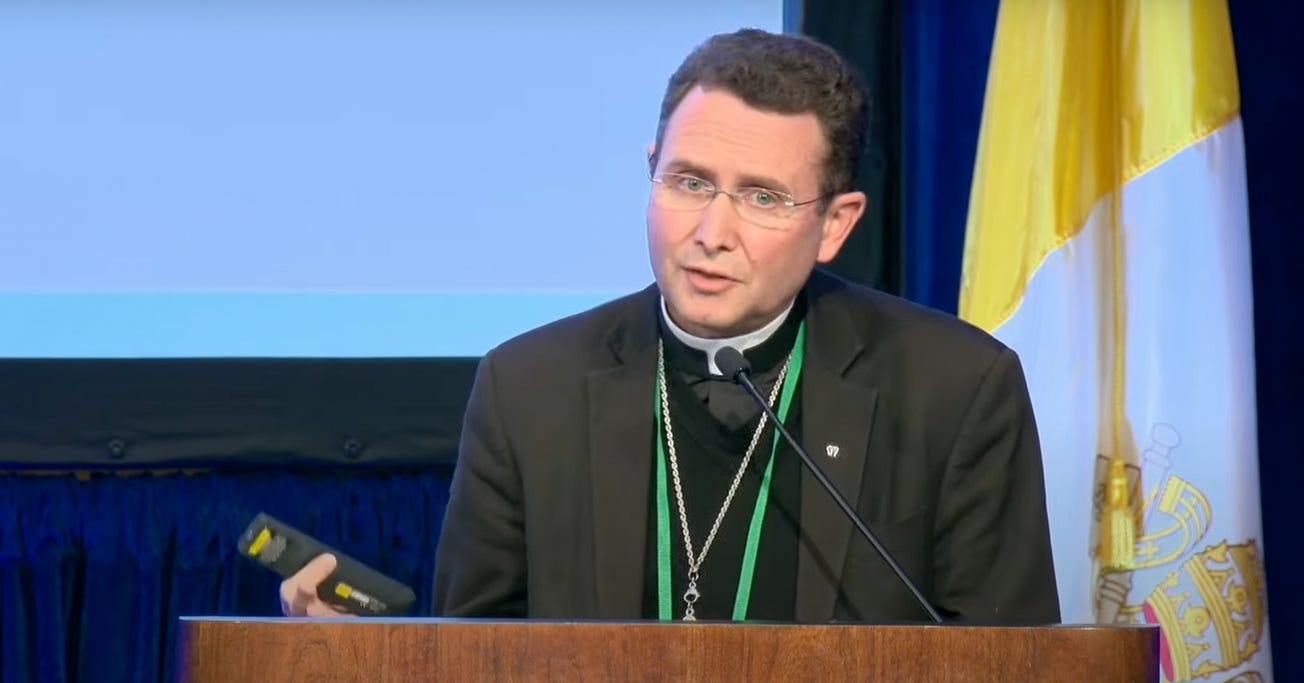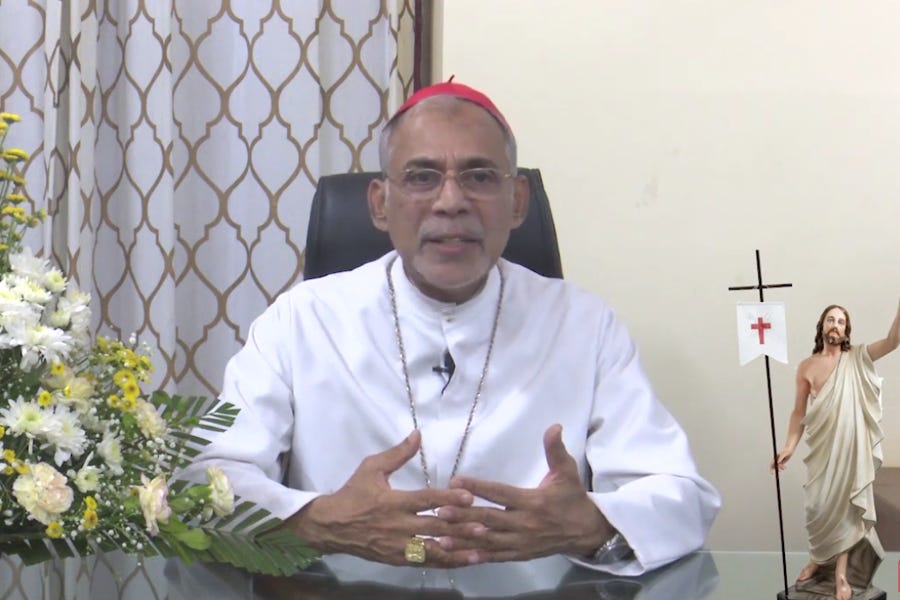Bishop Bryan Bayda is not from Mexico City. He’s not Hispanic. In fact, he’s not even a Roman Catholic. But, however unlikely it might seem, the Canadian bishop in the Ukrainian Catholic Church has a deep, pious, and loving devotion to Our Lady of Guadalupe.
“I didn’t think you’d see that coming,” Bayda told The Pillar, laughing, as he explained that his ministry as a bishop, “has really blossomed because of Our Lady of Guadalupe.”
The bishop told The Pillar that knowing and loving Our Lady of Guadalupe is key to understanding the Church’s mission of evangelization.
“She was the perfect — not just an average — but the perfect example of incultured evangelization.”
“If I want to evangelize someone, it behooves me to take a look at who they are, their language, their background, their customs, where they lived, even possibly the immediate family, the domestic church: ‘Who did you live with? What did you do in your house? How did you practice your faith?’ And then [I can] point out and celebrate with them: ‘This is how God has been present in your entire life,’” the bishop said.
That approach is how Our Lady of Guadalupe evangelized “the natives, the Aztecas, in Tenochtitlan and Tupeltac. She pointed out how God has been present all this time.”
The bishop laughed again: “Why is that important to me, a Ukrainian Catholic?”
“Because our Ukrainian Catholic Church is a very cultural Church. And so I can appreciate, as a Ukrainian Catholic, how much our cultural expressions are at the service of our faith, no matter how they started, no matter how many centuries we’ve been practicing them.”
“In 988 the Ukrainian people received Christianity. And prior to that, St. Cyril and Methodius, who came from the Greco-Catholic Church, came, watched, learned, appreciated our customs. They observed us as people. They were very instrumental in helping us get a written language, and today so many of our letters are ‘Cyrillic,’ as we say.”
“And with inculturated evangelization, they pointed out to the people then in the land of Rus that ‘God has been with you, God has been present here. Your development of culture and festivals and ways of doing cultural crafts — all of those things have a certain significance in the Christian faith.’”
“Our cultural practices now have Christian significance, and they are embedding faith into our daily lives. And that’s important for us as Ukrainian Catholics,” the bishop added.
“Today in Canada, if we want to evangelize one another, in this case, if I'm speaking to an indigenous group, I need to understand their culture. I need to understand their language, their ways of expressing things, their ways of understanding nature, their relationship with it, and then I can celebrate with them the presence of God in all of those things.”
Our Lady of Guadalupe, who spoke in symbols relevant to the Aztec culture to which she appeared, is the model for that kind of evangelization, the bishop said.
The lesson of her approach “helps me become a better evangelizer, because I can fully appreciate the power of a cultural background, and how it sustains. It's the conduit. It sustains my faith today.”
But the bishop, who is a member of the Redemptorist religious order, noted that inculturated evangelization doesn’t stop at affirming God’s presence. It aims for conversion.
“Mary did not wholesale take everything from the culture and give everything a Christian significance. She weaned people, especially the Aztecs, off of human sacrifice. That’s the way they worshipped the sun god. They would make human sacrifices. And yet the beauty of her message is that you no longer have to do that. The Aztecs saw her image, and the message in the tilma, and they saw and understood that the Son of God is going to give us his own flesh and blood.”
That conversion, he emphasized, begins with understanding.
“When you understand the culture, it becomes the riverbed for the water of life,” he said. “And my understanding of the etymology of the word ‘Guadalupe’ is that it evokes a riverbed, which is to be the riverbed of our faith.”
Bayda, 59, is bishop of the Ukranian Catholic Eparchy of Saskatoon, and is temporary administrator of the Ukranian Catholic Eparchy of Toronto. In total he is the shepherd of nearly 50,000 Catholics in Canada, almost half the number of Ukranian Catholics in the country.
The bishop explained that he came to love and appreciate Our Lady of Guadalupe in 2009, the year after he became a bishop.
At a Knights of Columbus conference, he found himself fascinated with an image of Our Lady of Guadalupe, one he had seen many times, but never fully understood.
“It really intrigued me how this image was so symbolic. It was written, it was basically a visual of the word of God, which so speaks to me as Ukrainian Catholic. When we think of icons, we refer to icons as being written.”
The image of Our Lady of Guadalupe, conferred miraculously on the cloak of a peasant named Juan Diego in 1531, is rich with symbols significant to the Aztec people.
“That's how they come to know the word of God, visually. And so too, in our tradition, visually you come into a church and you have, you know, a big portion of the Gospel, a good portion of the Scripture, written on the walls.”
“And so that's how I got to know Our Lady of Guadalupe,” Bayda explained.
The bishop spoke to The Pillar about his ministry near the end of celebrating a double Easter season. He explained that in Saskatoon, most Ukrainian Catholics, who have been in the country for generations, celebrate Easter at the same time as Latin Catholics, on the date of the feast in the Gregorian calendar.
In Toronto, where many Ukrainian Catholics have active family ties to Ukraine, Easter is often celebrated later, on the schedule of the Juilan calendar, as it is in Ukraine. Bayda celebrated Holy Week and Easter at both dates.
Bayda also spoke with The Pillar amid a challenging pastoral period in the Toronto eparchy, as the bishop has been tasked with auditing personnel files, and some beloved priests have recently been removed, at least temporarily, from ministry.
After one Toronto priest was suspended from ministry, Bayda has faced considerable criticism. Last Saturday, protestors arrived outside the diocesan chancery. The bishop met with the group and spoke with them about their concerns, reportedly talking and listening for more than an hour.
“I met with them in a little area in the front [of the chancery]. We were outside, and there was grass on the side for the children to play, because they got bored with things quickly.”
“And I was able to say:
‘Look, I'm here. Unfortunately I've taken this action, but I was compelled to, given the advice as administrator in the eparchy that I had to take. Secondly, I want to be here with you. This is painful for you. This is a shock for you. And I want you to be able to direct that pain, what you want to share. I want to be with you right here — the whites of my eyes, the face that I have — I want you to be able to direct your needs to a human being, not to some...answering machine.’
“I wanted it to be human. I wanted them to know that I am with them in their pain. That as much as possible I am attempting to understand their pain. And that we have to be patient. We have to pray. We have to still follow the precepts of the Gospel.”
“I wanted to, in the words of the Holy Father, to smell like my sheep. I wanted to be, as much as possible, a good shepherd….That was my motive. Hopefully that wasn’t misunderstood, or there won’t be more bad fruit than good, but my intention was to be with them in their pain, and to pray with them.”
The bishop said he thought of Our Lady of Guadalupe in those difficult moments, as he often does in pastoral ministry.
He said he especially thought of the words that Mary spoke to St. Juan Diego when she appeared to him in 1531.
“Am I not here, I, who am your Mother? Are you not under my shadow and protection? Am I not the source of your joy? Are you not in the hollow of my mantle, in the crossing of my arms? Do you need anything more? Let nothing else worry you, disturb you.”
“Those were the Holy Spirit’s words through the Mother of God, to all of us,” Bayda said.
“And that's what the Church says to the world today, and what we must say, not just to the faithful but to the world:
‘Are you not in the shadow of my protection? Am I not the source of your joy?’ The church says this to all nations, to all the population of the world: ‘Are you not in the hollow of my mantle, in the crossing of my arms?’
“Do you need anything more? Look for all that you need in the Church.”






